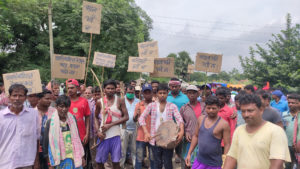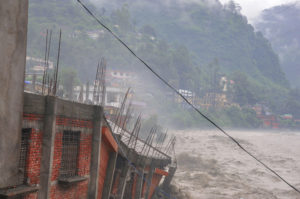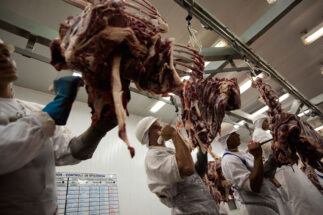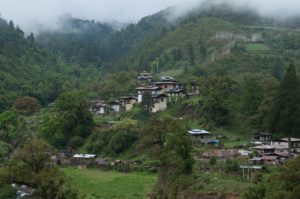Since September 28, the Committee on Agriculture of the United Nations’ Food and Agriculture Organization has been conducting its 27th session virtually. For this session, people from across the world have come together to petition the UN to declare 2026 an International Year for Rangelands and Pastoralists (IYRP).
Nearly half the land area of the Earth is classified as rangeland. The proposal states that an IYRP would “raise awareness on the importance of rangelands and pastoralists for livelihoods, healthy ecosystems and other relevant dimensions of sustainable development.” The decision could also pressure governments to implement policies that stop pastoralists’ political marginalisation, and ensure they are consulted on management of the land.
![Yurt belonging to semi nomadic pastoralists in the Pamir region in Kyrgyzstan [image: Alamy]](https://dialogue.earth/content/uploads/2020/09/R00B1P.jpg)
See: Pakistan’s centuries-old Bakarwal community faces dual threat
“Pastoralism is just not recognised,” said Hanwant Singh Rathore, director of the Lokhit Pashu-Palak Sansthan (Society to Aid Pastoralists) based in the Pali district of the Indian state of Rajasthan. He has been working with the camel-herding Raika community for 30 years, and has observed that governments behave as though the herders do not exist.
In 1988, the Kumbhalgarh Wildlife Sanctuary was created in Rajasthan over about 600 square kilometres of land. When the Raika moved with their herds along the routes they had been taking for generations, they were told they could no longer allow their animals to graze in those lands – the forest area was “protected” from their animals. No prior notification had been given to them, and they were not consulted. Because the Raika are on the move for about nine months a year, they are hard to contact – even for policymakers.
![A camel herder drives a herd through the Thar Desert towards Pushkar for the annual trade fair, Rajasthan, India [image: Alamy]](https://dialogue.earth/content/uploads/2020/09/D2F9GH.jpg)
Their customs often emphasise striking a balance with nature, because their lives are dependent on the ecosystem. For example, among the Changpa – a community that herds the famous pashmina goats on the India-China border – water is carefully conserved. Water used to wash hair is carefully saved to be reused; nothing is ever wasted and everything is a “resource”.
Dinesh Rebari works with the Maldhari Vikas Sangathan in Gujarat, India, a non-governmental organisation working on issues affecting pastoral communities. A pastoralist himself, he said these traditional practices, and the knowledge behind them, should ideally feed into government policymaking. “We need easy access to common lands and rangelands, we need to be able to use these resources, and our voices should be heeded in their management. These are not demands that would serve only the pastoral communities, these are demands that would conserve these rangelands and help us preserve them for generations to come,” he said. He said he hoped that the UN will declare a special IYRP.
![Two pastoralists stand in front of camels. Adaptive practices of pastoralists rarely make it into the books of "official knowledge" [image by: Ilse Köhler-Rollefson]](https://dialogue.earth/content/uploads/2020/09/KWS-herders.jpeg)
At a meeting of pastoral communities in Gujarat in 2015, Anu Verma, who works with the South Asia Pastoralist Alliance, reported that such communities across the world are under stress. Many are forced to withdraw from traditional livestock keeping as the lands they earlier had free access to have been acquired by governments or privatised. Mechanised technology in agriculture has meant vast expansion in settled agricultural production, to the detriment of rangelands.
For communities that migrate across national boundaries, there are additional worries. The Maldharis of Afghanistan used to move into Pakistan in the winter, but war and instability have limited this. Their route is now heavily policed, and documents such as passports and identity cards are required for crossing the border, which pastoral people often do not have.
See: Pakistan’s centuries-old Bakarwal community faces dual threat
Many South Asian pastoral communities travel from the cold Himalayan deserts to the dry lands of the arid southern deserts. They raise and live with, camels, yaks, buffaloes, sheep, goats, horses and donkeys. In recent years, groups of pastoralists from India, Afghanistan and Nepal have started to collaborate, comparing notes and attempting to collectively pressure their national governments to draft policy in their favour. This group, which has come together under the umbrella of the South Asia Pastoralist Alliance in the past two years, has begun mapping rangelands and the pastoralists in these areas. It is set to expand to include members from Bhutan and Bangladesh.
The Alliance estimates that 173 million acres in India is rangeland, and up to 75% of India’s rural population depends on such lands. In the past three decades, non-recognition of the traditional rights of pastoral communities and indigenous peoples has caused such lands to be taken over for other purposes.
A 2011 judgement of India’s Supreme Court mentioned this loss of common grazing lands: “What we have witnessed since Independence, however, is that in large parts of the country this common village land has been grabbed by unscrupulous persons using muscle power, money power or political clout, and in many States now there is not an inch of such land left for the common use of the people of the village, though it may exist on paper. People with power and pelf [money] operating in villages all over India systematically encroached upon communal lands and put them to uses totally inconsistent with its original character, for personal aggrandizement at the cost of the village community.”
Ilse Köhler-Rollefson, a scientist, researcher and activist who has worked with the camel herders of Rajasthan for over two decades, noted that pastoralism is poorly documented in India. Unlike in Africa, for instance, where pastoral people form distinct tribes, the pastoral communities of India are often intertwined in social interactions with caste groups.
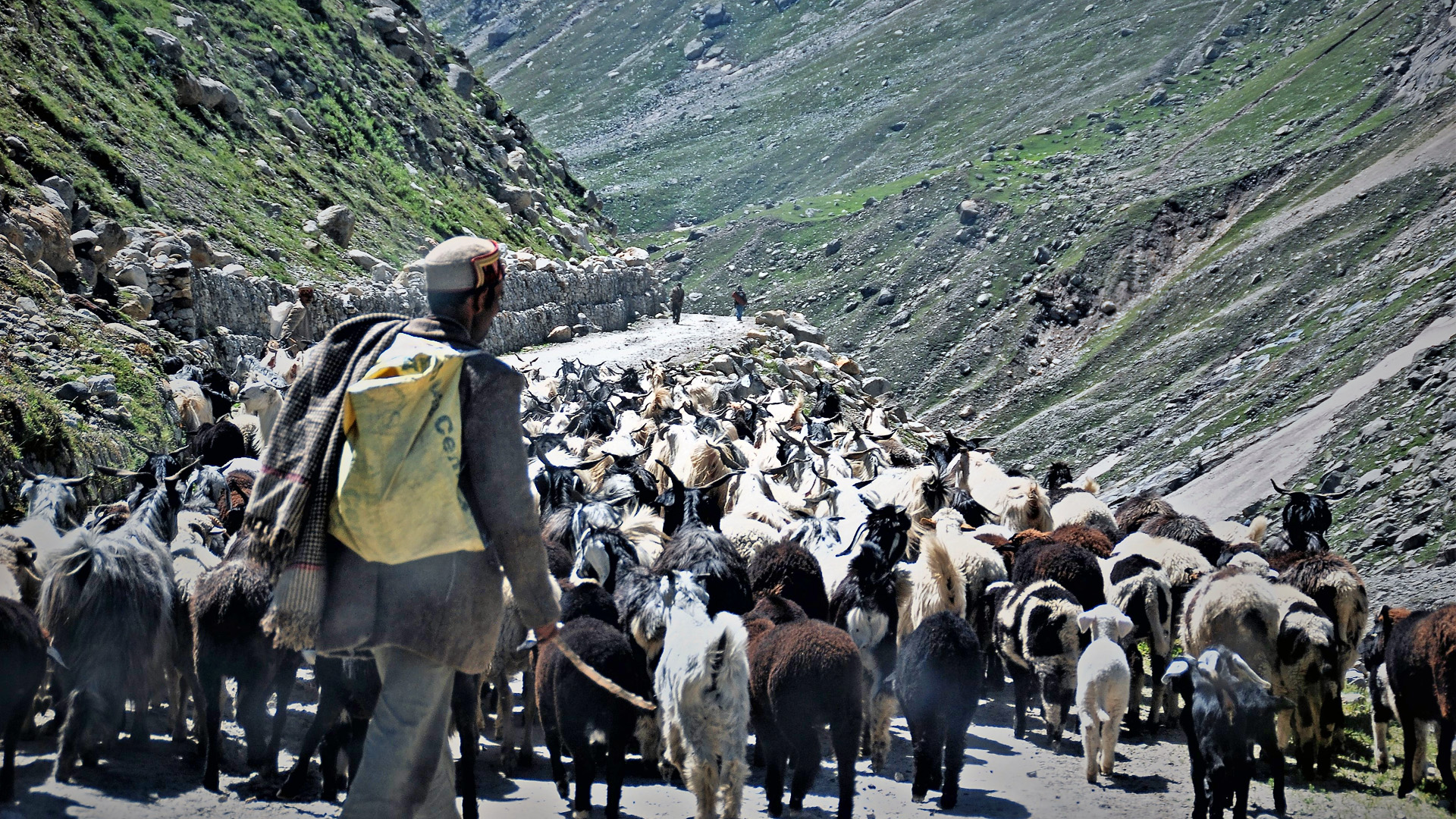
See: Will border disputes in the Himalayas affect climate research?
Invisible to the government
Government provisioning for the poor does not include nomadic pastoral people; most documents for access to government services require a fixed address. The mobile nature of their lives also means that schooling becomes difficult, with pastoral communities have lower levels of literacy than others.
See: Photo essay: Bakarwals of Jammu & Kashmir
Despite their marginalisation, though, researchers have documented the resilience of their social structures and the close ties that help them through hard times. Nandita Chaudhary is a former academic at the University of Delhi’s Department of Human Development and Childhood Studies. Writing about the Changpa shepherds, Chaudhary noted how children in the community closely bond with the animals, often snuggling up with the goats for warmth. Such communities have also developed their own medicinal practices for the animals they live in close contact with. These are often based on herbs found in the rangeland, but they are not documented or recognised by standard veterinarians.
The populations of pastoral communities in India have not been counted for decades. Pre-independence census records documented the numbers of some groups that were recorded as caste groups. However, the caste census was discontinued after independence; it was undertaken again in 2011, but pastoral communities were not counted as part of this. There are thus no estimates of the number of people engaged in pastoral activity in India.
As EU and member states we acknowledge that rangelands and pastoralism have a great potential to contribute to SDG 1, 2 and 15. We therefore agree to the submission of the related draft resolution to the FAO Council, requesting the consideration of declaring 2026 as IYRP @bmel
— Ambassador Joachim Bleicker (@germany_un_rome) September 28, 2020
Pastoralists and academics say that the IYRP could open up more conversations, and that both government policy and long-term nature conservation can be informed by the traditional practices and knowledge of communities. It seems as if governments are listening: 13 governments have supported the initiative, and on September 28 Ulrich Seidenberger, the German permanent representative to the FAO, tweeted support on behalf of both Germany and the EU.
![<p>Herders ride their ponies to work in Kashmir [image: Alamy]</p>](https://dialogue.earth/content/uploads/2020/09/EM0P7D.jpg)


